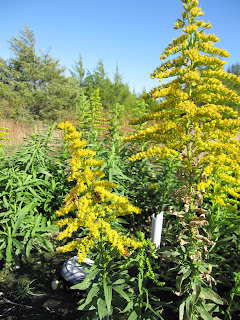I know it’s not winter yet, but as the weather is finally cooling off, it might be time to think about it. We all know that in a few weeks it will be time to get out the sheers and do our annual pruning. It will also be time to transplant new trees, dig up any bulbs we want to separate and get the flower beds in order - but what about the vegetable garden. Do you need to do anything special to prepare it for winter? The answer is yes. As many of you know, here in NE Texas you can have some things growing just about year round in the garden. Some vegetables that we just can’t grow all summer thrive in the cool weather. Our winters are generally mild enough to allow for spinach, cabbage, onions, beets and a few others to thrive right through the New Year. I am looking forward to seeing how long I can keep these plants going this year. Even my pickiest eater will eat raw spinach! That being said, it must be noted that these crops often don’t take up the whole garden. There is a lot of space left untended. Should you just leave it over the winter, or is there some better way to take care of it the unused garden? These are the questions I asked myself last week. A little bit of research yielded a predictable answer. Prepare for winter!
If for no other reason than to make your life a little easier in the busy spring months, you should consider getting ready now. Aside from saving time in the spring, proper preparation now can enrich the soil come spring, help prevent winter weeds, and keep the topsoil from blowing away with the winter winds. Sounds great, so what to do…
The best thing to do is to plant a cover crop. Yikes, more planting? Yes more planting, and you don’t even get to harvest it! Planting a crop like winter wheat, crimson clover, or rye will keep the soil from blowing away in the winter, shade the soil to keep the seeds from germinating into nasty weeds, and add organic matter back into the soil when springtime finally rolls around and you turn it under. That’s right, you just plow or till it right back into the soil in the spring.
Ok, that’s the best thing to do, but if you have raised beds, or just don’t feel up to the extra effort, at least you can till and mulch. Turning the soil now will leave it soft for the spring and ready to plow. Make sure to mulch it so that the loose soil doesn’t blow away! Weed the raised beds to get any old plants and weeds out and then mulch, mulch, mulch. Your spring garden will thank you by yielding a bigger harvest!
Don’t forget to put a layer of mulch over your perennial vegetables and flowers too. This will help protect them from the temperature changes we experience here and keep them from freezing if the temperatures do dip too low.
A little extra work now can save a lot of time next spring.




